
It’s safe to say email is a favoured channel within B2B marketing.
In fact, 93% of B2B marketers use email for communicating with their audience.
And as we are all consumers at heart, it’s unsurprising that many marketers take inspiration from the creative and engaging B2C campaigns that land in their own inboxes.
Whilst taking inspiration from other industries can be beneficial, it’s important to acknowledge that B2B email marketing has its own set of strategies and best practice.
Without utilising these, B2B marketers may find their efforts falling flat. As they fail to engage with an audience who have different challenges, budgets, and buying power than regular consumers.
If this sounds familiar, then read on to ensure your B2B email marketing is successful, from the foundations through to campaign send and reporting.
What is B2B email marketing?
B2B email marketing refers to strategy and campaigns, sent via email, that are aimed at businesses and organisations as opposed to consumers.
The reason that B2B requires its own email marketing strategy is that the approach needs to differ from B2C tactics. That’s because B2B businesses are targeting a different type of audience.
These audiences will have completely different requirements, budgets, and buying processes. They will often make purchases as a team, needing input and sign off from different members of the business.
B2B email marketing needs to take into account all of these elements, whilst managing to provide an engaging experience that rivals that of B2C.
Challenges
Before we get stuck into some of the innovative email campaigns that B2B businesses can execute, it’s important to acknowledge the challenges which these marketers may face.
Data management
The variety of ways to store data, from legacy systems to spreadsheets and hard copies, means that collating and accessing data to begin email marketing can be a daunting task.
After all, data is essential to achieve most modern email marketing strategies. Such as automation, personalisation, and even basic segmentation.
In fact, 40% of B2B businesses claim that their data management strategy is only somewhat successful or even unsuccessful, so there’s clearly room for improvement.
Fierce competition
B2C businesses once boasted the most innovative email marketing campaigns. However, B2B has fast been learning as audiences demand a more engaging, personalised experience.
However, B2C giants such as Amazon are delving into the B2B space. Utilising their data, budgets, and skills to offer hyper-personalised experiences for businesses.
Not only are many B2B businesses having to play catch up with these giants, but in some cases, they’re having to compete with them too.
Complex buying process
The B2B customer journey isn’t as straightforward as the simpler B2C process. B2B journeys often consist of more comparisons, quotes, negotiations, and sign offs.
This journey requires a lot of information.
B2B customers will need all of the finer details, especially when it comes to gaining sign off from their Senior Management or Board. And this information needs to be readily available, at the right time.
Increasing consumer demands
With an increasing number of 20 to 35 year olds now involved in B2B purchasing decisions, consumer demands are evolving and increasing.
73% of B2B executives report that consumers’ demand for tailored experiences has increased over the past few years. They require a personalised, responsive, and seamless purchasing journey. And are happy to look elsewhere if you can’t fulfil those needs.
Getting started with B2B email marketing
We’ll shortly move on to the types of campaigns that B2B marketers can send. But first, it’s important to set the foundations of your email marketing to truly improve your results.
Data
Combine data sources
We’ve mentioned that data is a significant challenge for B2B businesses.
Key to resolving the issue is combining all of your data sources into one single, accessible place.
This ensures that B2B businesses can utilise their data to begin sending email campaigns, and then build on this strategy using more advanced, data-led communications.
Data insight
When data is in one centralised place, businesses can gain a 360-degree understanding of who their audience are, how they behave, and build out their ideal customer profile (ICP).
This is essential for strategy, planning, and targeting of email campaigns.
Goal setting
Before beginning any marketing campaign it’s important to understand exactly what you want to achieve.
We recommend setting SMART goals to streamline this process and ensure you can achieve great results, fast.
If you’re not familiar with SMART goals, they are a method of creating specific targets which incorporate the following elements:
- Specific
- Measurable
- Achievable
- Relevant
- Time-bound
For example:
Grow newsletter database by 10% within the next six months so that the business can communicate with and nurture engaged potential customers.
Understand your landscape
A key element to setting goals is to understand the industry landscape that your business exists in.
This is to gain a deeper understanding of the audience you are hoping to communicate with, the specific individuals you want to target, and the businesses you’ll be competing against.
Audience
The best place to start is with any data that you hold on those who engage with you.
Who opens your emails? Visits your website? And purchases from you?
And we don’t just mean individuals. As a B2B business, it is important to also understand the companies and brands that are engaging with you.
Information to gather can fall into three categories:
- Demographic data — Such as industry, number of employees, location of the business.
- Behaviour — How do these businesses and individuals engage with your brand? Do they visit your website, and what pages? Do they open and click through from your emails?
- Purchases — What is your audience purchasing? Do specific types of customers purchase specific product types or at a specific frequency?
Ideal customer profile
From all of this information, you can begin to build an ideal customer profile (ICP) and target your email communications to these individuals and businesses.
You may want to dig even deeper into data to really flesh out this profile, so consider the following:
- Budget — What will the company or individual pay for your offering?
- Industry — Are there specific verticals you want to target?
- Location — Do you want to focus on specific regions?
- Legal considerations — Are there legal limitations to your customer base such as age, location, or governmental restrictions?
- Product or service restriction — Can you meet their requirements with your offering?
Competitors
The last piece of the puzzle is understanding your competition.
This isn’t so you can do what they are doing. Instead, it is so that you can be better than them, and identify what you can offer that they can’t.
Research the market and pinpoint the businesses marketing to your target audience; conducting a competitive analysis of their offering.
Specifically, look out for:
- Product offerings
- Sales tactics
- Marketing, content, and social media
- Support and implementation offering
- The customers that they have
Using this information, you can begin to understand the offerings, strengths, and weaknesses of your competitors to inform your B2B email marketing strategy.
Reporting methodology
The final element you will want to organise prior to campaign creation is your reporting methodology.
This will be dictated by the previous work you have done on setting goals. By identifying these, you will know the type of reporting required.
For a more in-depth explanation of some of the B2B email marketing metrics you should be tracking, then head over to our blog post on the subject. (insert URL once live)
In the meantime, here is an overview of our favourite metrics:
- Open and click through rate — What % of recipients are opening your email and clicking through?
- Inbox placement — Is your email getting in the inbox, or the dreaded junk folder?
- Conversion rate — Are your recipients taking meaningful action after opening your email?
- Unsubscribe rate — What % of recipients are choosing to no longer receive your emails?
- Email client — What email client, such as Outlook or Gmail, are your recipients opening your emails on?
- Heatmapping — Which sections of your email are being engaged with the most?
- Target market engagement – Who is engaging with your emails? Are they your target market?
B2B email campaign strategies
It’s the moment you’ve been waiting for, campaign strategies.
Whilst B2B marketers can take inspiration from the creativity in B2C email marketing, there are some strategies and campaign types that will help marketers to target their B2B audience.
Segmentation
Segmentation is a proven strategy, with marketers reporting a 760% increase in revenue from segmented campaigns.
Once you have combined your data sources and identified your audiences, you can begin to segment based on different criteria.
RFM modelling
One particularly popular segmentation strategy is RFM (recency, frequency, monetary) modelling.
Using this process, B2B brands can identify different customer groups such as potential customers, high spenders, frequent shoppers, or disengaged consumers, and target them with messaging specific to their behaviour.
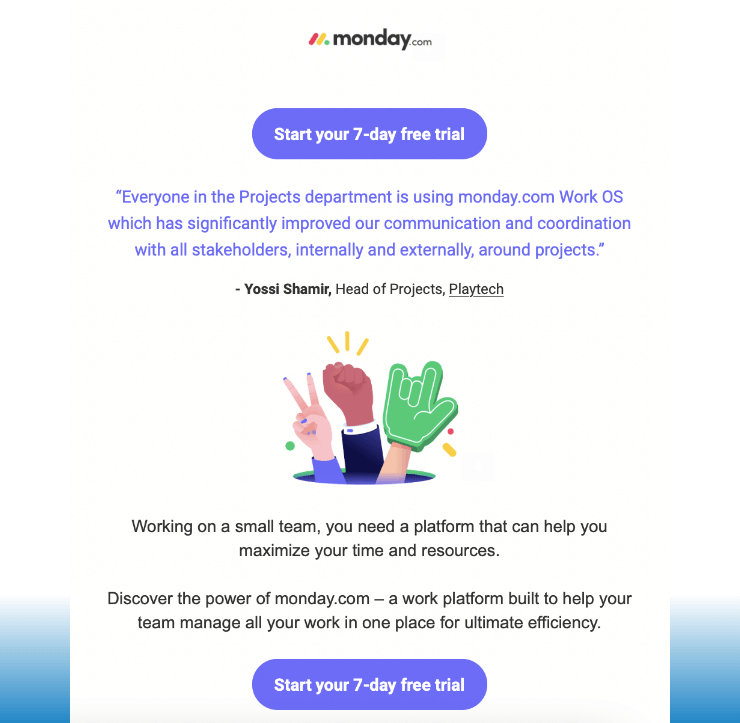
Personalisation
Personalised emails deliver six times higher transaction rates. And marketers see an average increase of 20% in sales when using personalised experiences.
Personalisation isn’t just a trend, consumers now demand tailored experiences via their favourite channels. And as personalisation capabilities become more advanced, consumers will only expect more.
Product recommendations
Whether you offer products or services, using email to make personalised recommendations is a powerful strategy.
Personalised recommendations can be based on any data that a business holds on its recipients. But is particularly effective when combined with website and purchase data; triggering recommendations based on pages browsed or related to past purchases.
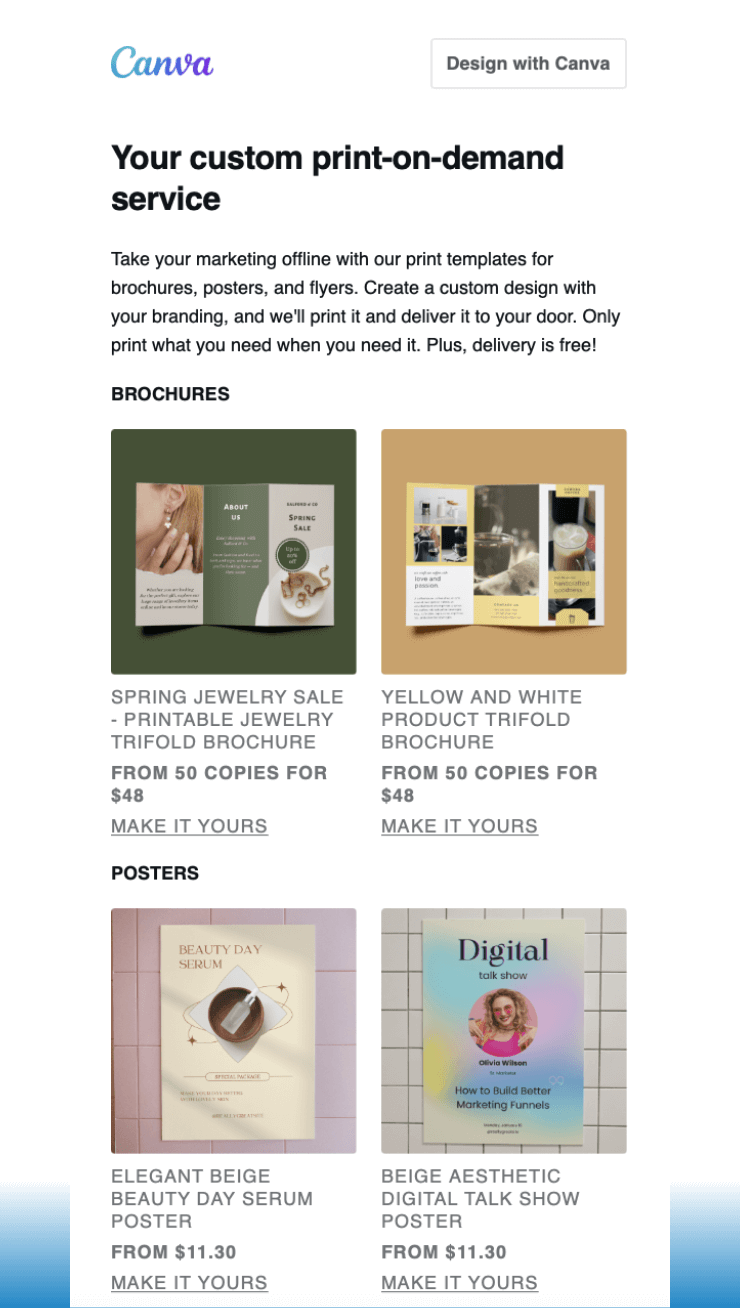
Personalised offers
Using the data a business has on its recipients, they can personalise offers based on demographics, location, purchase history, or lifecycle stage.
For instance, a new customer could receive an upsell offer, whereas a long-term, loyal customer could be sent a referral scheme.
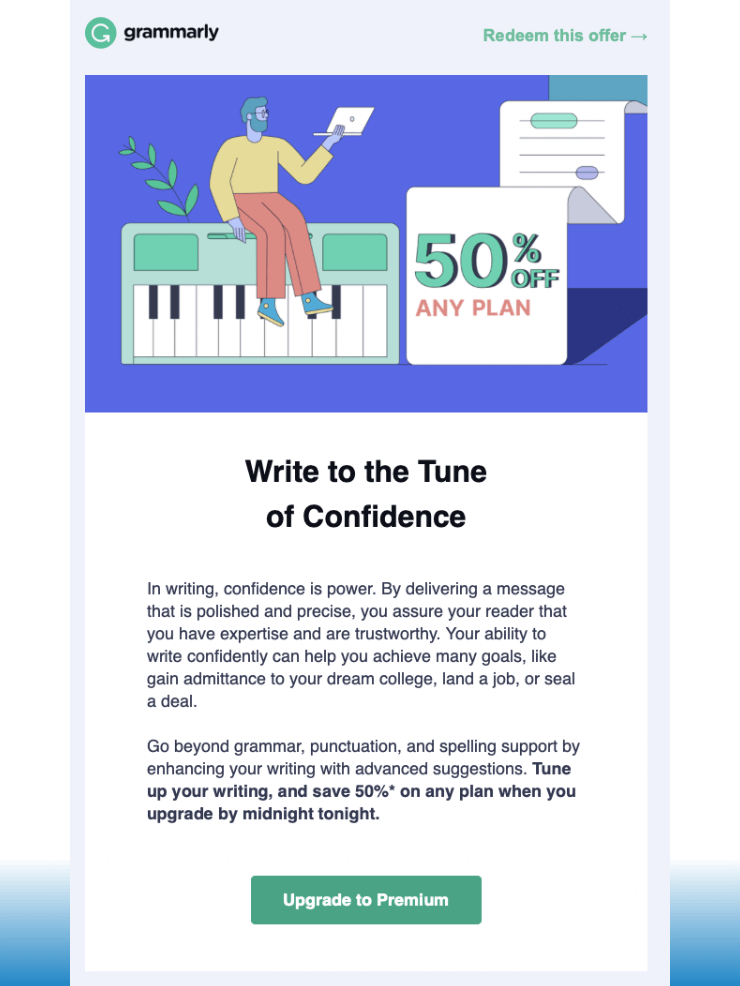
Personalised pricing
Data can support businesses in identifying information that can dictate specific pricing to specific groups. Marketers can then use dynamic content to populate emails with personalised pricing based on the individual recipient.
For instance, a long term customer whose subscription is coming up for renewal can receive a discount code to encourage them to stay.
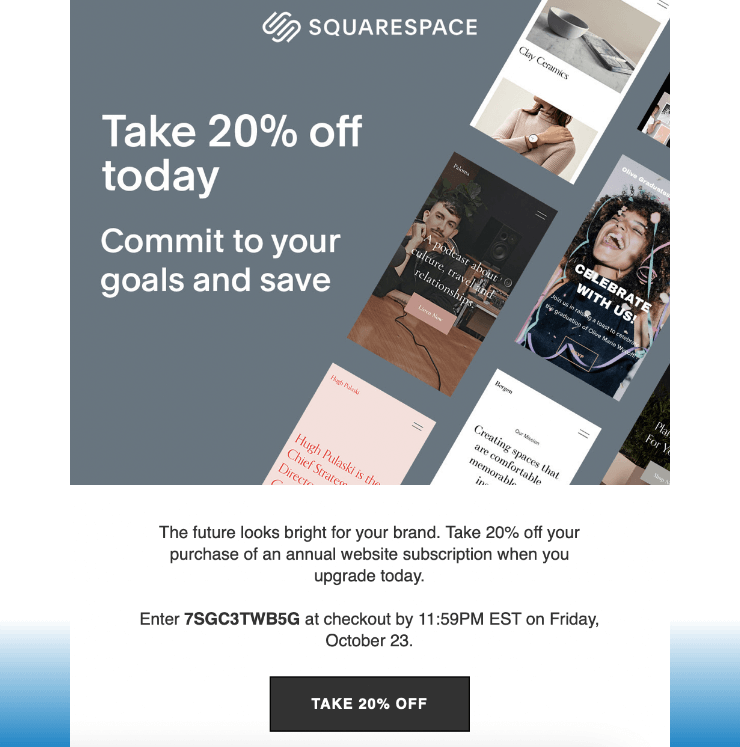
Lifecycle and nurturing
Depending on where your recipient is in their customer journey, you will want to send different communications, content, and promotions to ensure you are targeting them with the relevant messaging.
Welcome series
When a customer first signs up or purchases from a brand, they are in a highly engaged state.
This is the perfect time to send them a warm welcome.
This could include introducing them to your business, your products, and ideally happy customer reviews. As well as providing key information such as contact details and social channels.
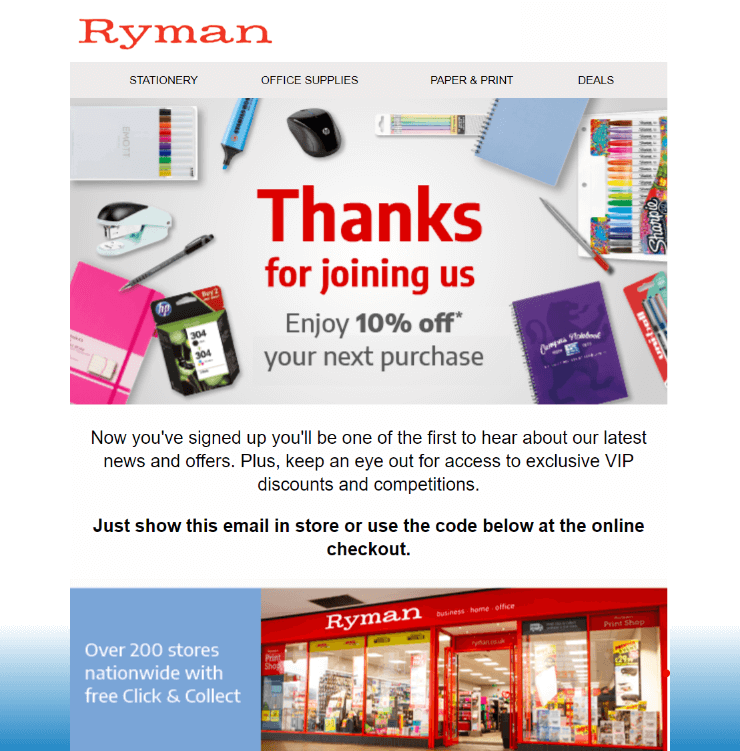
Loyalty and retention campaigns
Businesses can treat their loyal customers to the VIP experience through loyalty and retention campaigns.
Useful content and advice, referral schemes, invites to events, anniversaries, or simply checking in can help to keep customers happy.
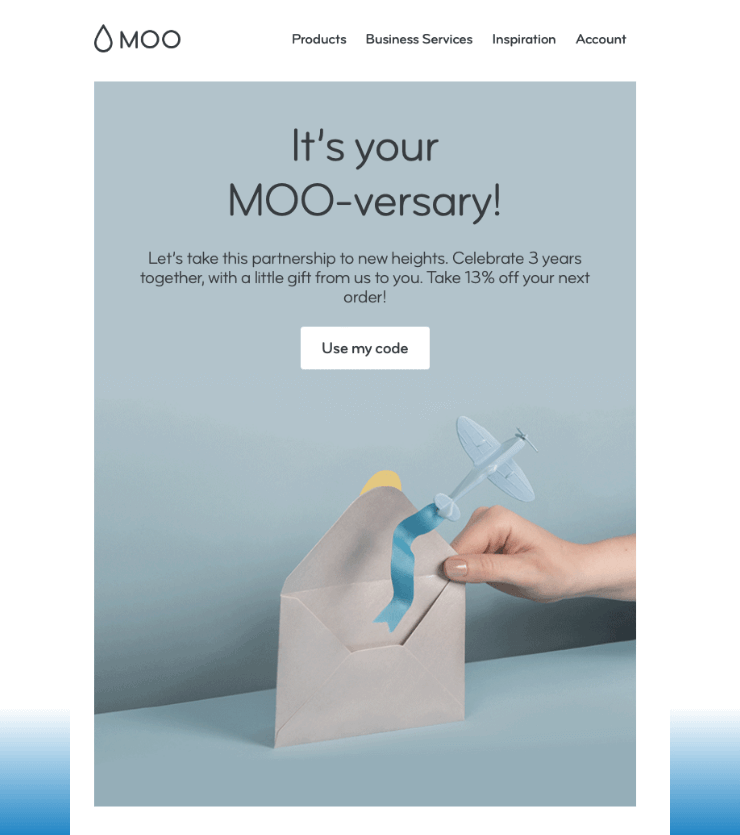
At risk
Use email to remind at risk customers of why they first purchased from you.
Promote the benefits of your business, showcase your happy customers, offer help or support, and even let them know they’re missed.
And don’t forget a clear call to action so customers can engage with you easily again.
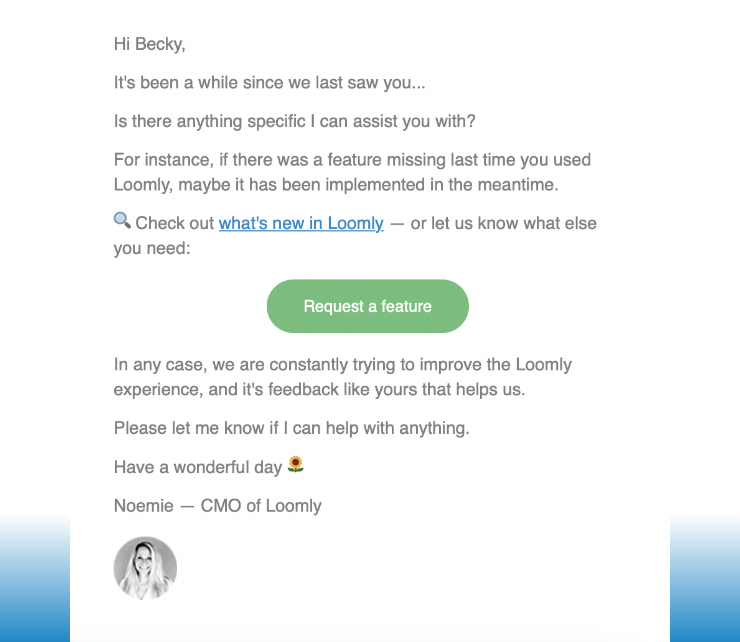
Why use a B2B marketing agency?
When it comes to improving your B2B email marketing, there’s a lot to consider.
Collating and analysing data, researching competitors, establishing goals, and setting up automations can be time and resource intensive.
And that’s before the email campaigns are created and sent.
By working with a B2B marketing agency, you will gain access to individuals with specific expertise in all the areas of B2B email marketing. They provide the platforms, tools, and resource to get your campaigns right from the very start.
Even better, by working with a good B2B marketing agency, such as 1973 Ltd, you will be able to gain invaluable insight into your campaign performance, and what your results actually mean.
This will provide you with the knowledge and actionable insights that you can implement to make a significant difference to your results.
Next steps
If getting your B2B email marketing up and running feels overwhelming, then we can help.
We’d love to discuss your email objectives and tell you a little more about how we support businesses like yours. So, why not get in touch with our friendly team for a chat?